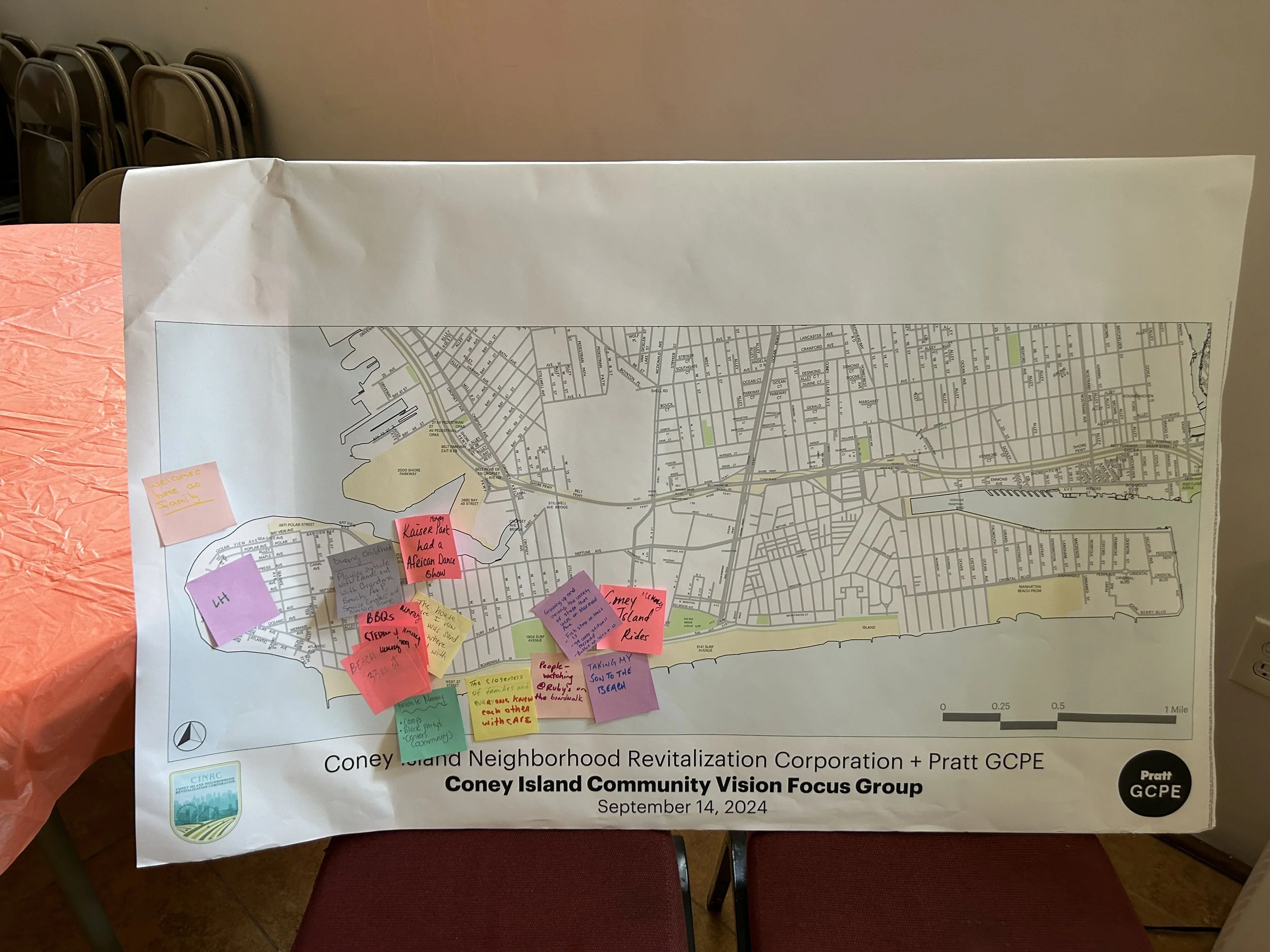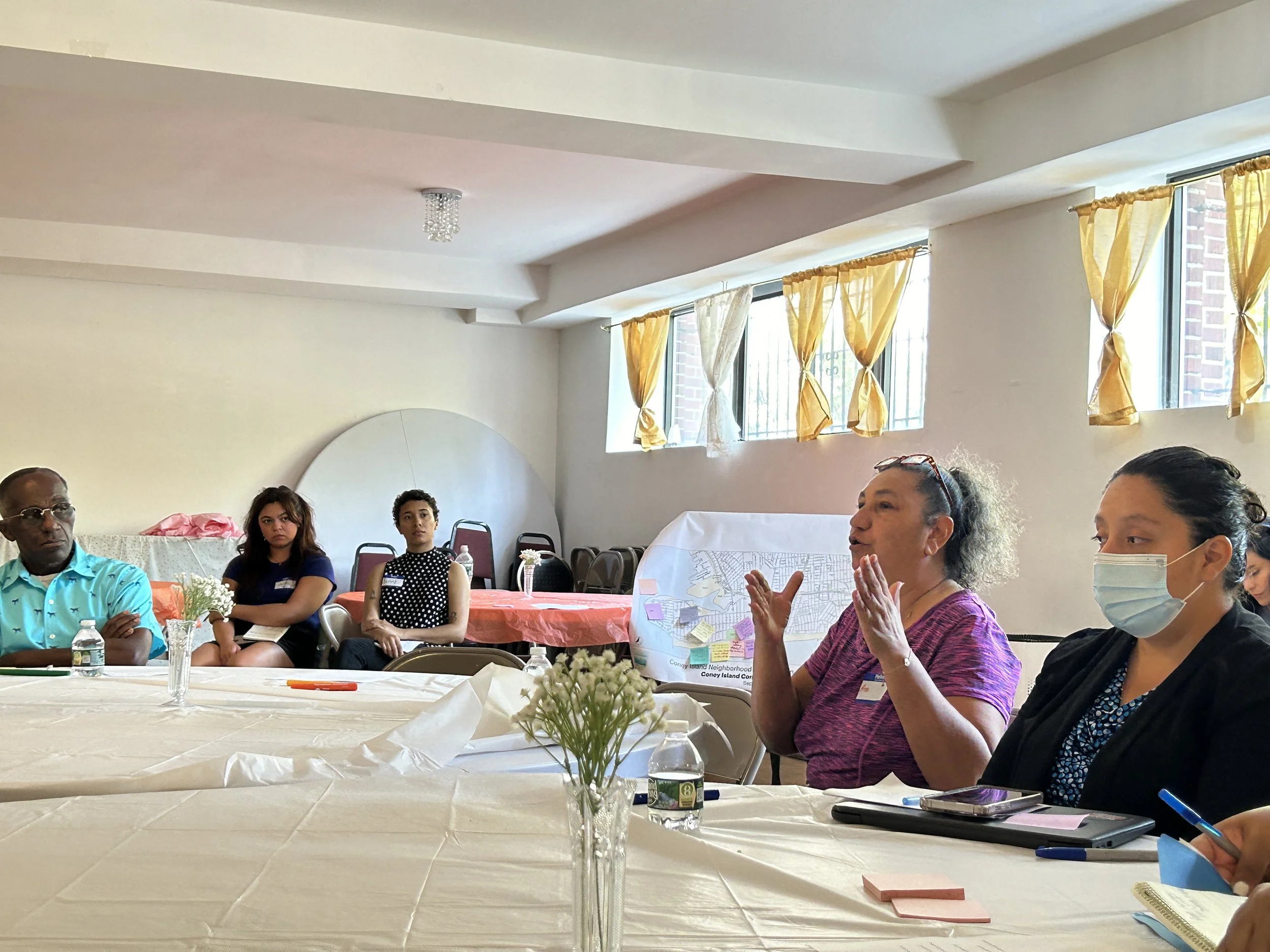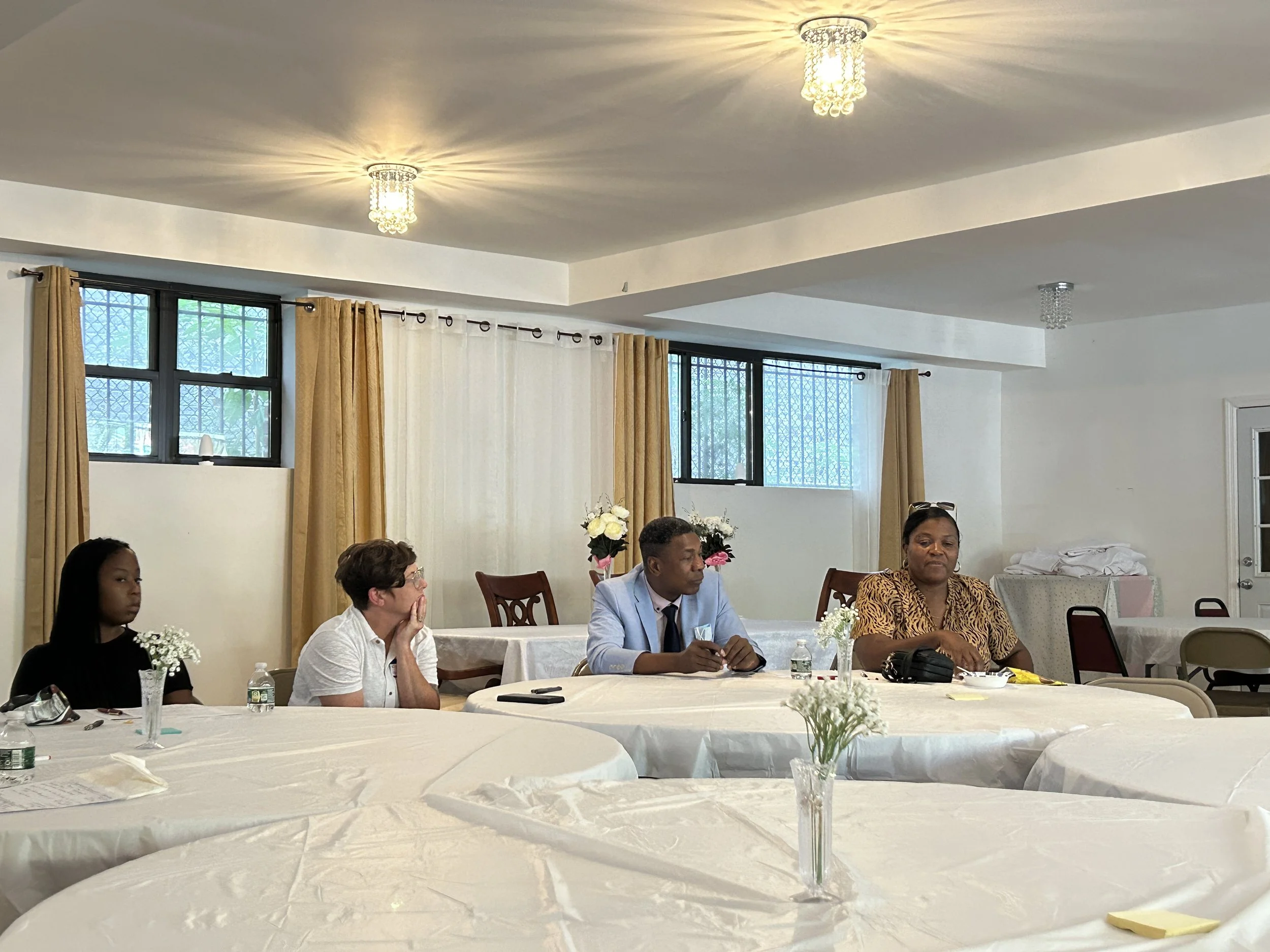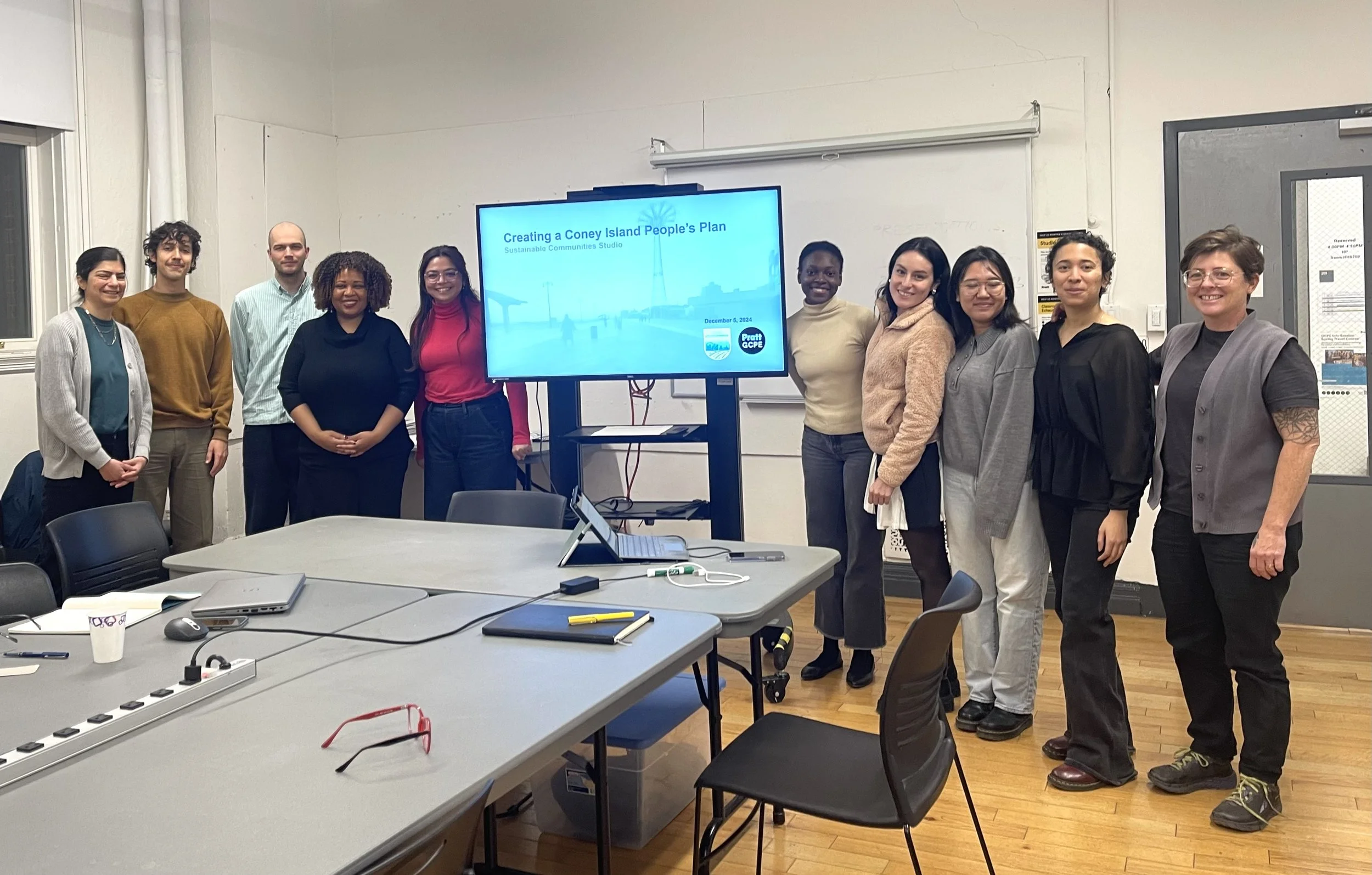CINRC-Pratt Studio Process
The responsibility of supporting a People’s Plan for such a dynamic community was not something that members of the Studio took lightly. We knew that community outreach and engagement needed to be at the center of our work in order for the narrative we presented to be a true reflection of residents’ wants and needs.
Over the course of 9 weeks we engaged in several forms of outreach which included:
Facilitating a focus group
Neighborhood Tour
Interviewing business owners
Surveying local businesses
Flyering
Attending community meetings and events
Our engagement process resulted in:
52 survey responses
12 informal interviews
Four in-depth interviews
One focus group
Community Value
Throughout this process, we heard very valuable feedback and detailed experiences from community members. Many longtime residents fondly talked about memories of their childhood and the strong sense of community that they once felt.
Some of the focus group participants’ favorite memories included:
“playing outside with friends”
“feeling a sense of unity within community”
“Staying out late in Coney Island as a kid”
“Playing in the sand dunes with my brothers”
A recurring themes heard from many residents was a desire for more widespread community involvement:
"If we don’t show we care, no one will."
Barriers to Participation and Next steps
The most complex part of our process was the development and distribution of our community survey. 40 questions were created with the purpose of getting a deeper understanding of what it’s like to live, work, and simply exist on Coney Island.
We dedicated much of our outreach to walking around the neighborhood to inform residents of the work we were doing with CINRC and request their participation in the survey. While spending time in the neighborhood, we observed that language barriers inhibited participation. Though we provided Russian and Mandarin translations of the survey tool, our lack of fluency in Russian, Ukrainian, or Mandarin proved to be a barrier to more widespread community participation.
By the end of our process, we received 52 total survey responses from diverse community members, including four people who responded to the Russian language version. Respondents represented residents, workers, visitors, and others; they ranged in age from 32 to 74 years and many were longtime residents: the average length of residence for respondents is in Coney Island olddetailed their experiences, concerns, and vision for the neighborhood. As CINRC continues this process, we recommend continuing to engage non English speaking residents as well as youth and young adults.
“The landmarks, institutions, schools, etc. are interconnected, there is a sense of shared community as “Coney Island”...
What people love about Coney Island is that it’s not a stand alone; it’s part of an urban fabric.”
“You see all this new development and you see that it [represents a] different story. So the question is what are the economical purposes [of this new development]? Is it for the people?....The question that remains now is what’s next?”
“Most of us here have grown up here. I was born here in 1966. My grandparents on my mother’s side came here in 1934. Everyone was neighbor to neighbor. Everybody shared food, and talks, and fireworks. We spent time at the boardwalk together. Spumoni and all that. Today, we no longer have anywhere near that type of healthy community. As far as food-wise, or even connection-wise. There’s talk of division. And on the issue of food, we have the Coney Island Food Bank– most of us call it “the Bank”. There are people on the pier there fishing, and they’re doing it for their food.”







